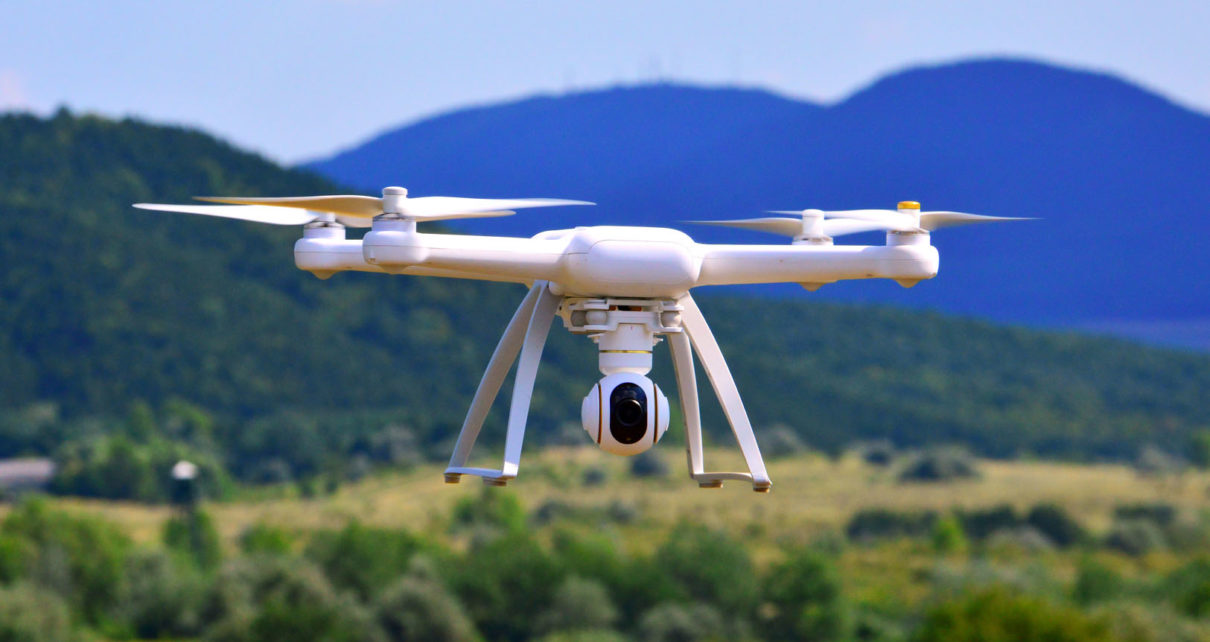After months of feedback and fine-tuning, the Federal Aviation Administration today issued its final versions of safety rules for drones that fly over people and at night — including the drones that Amazon is developing to make package deliveries.
“The new rules make way for the further integration of drones into our airspace by addressing safety and security concerns,” FAA Administrator Steve Dickson said in a news release. “They get us closer to the day when we will more routinely see drone operations such as the delivery of packages.”
Draft versions of the rules were issued a year ago, kicking off a review period during which the FAA received about 53,000 comments. The final rules take effect in about two months.
One set of rules lays out a system for remote identification of drones, which the FAA considers a key part of its plan to hold manufacturers and operators accountable if things go wrong. Once the rules take effect, if a drone isn’t using the Remote ID system, it can fly only within a limited set of FAA-recognized areas.
Amazon and T-Mobile are part of an industry group that’s helping the FAA develop the technical requirements for Remote ID. So are other big players, such as Wing (which got its start as a Google project), Airbus and Intel.
In response to the feedback it received, the FAA said it wouldn’t require drone manufacturers to make Remote ID accessible via internet-based services. Instead, drones could be retrofitted with radio transmitters if necessary to broadcast their Remote ID. That change addresses objections that were lodged by DJI, one of the world’s biggest drone manufacturers.
Drone operators will have 18 months to start producing drones with Remote ID, and operators will be given an additional year to start using drones with Remote ID.
A separate set of rules will govern operations that involve drones flying over people, or flying at night.
Like the draft rules, the final versions are aimed at minimizing the risk to uninvolved members of the public, including open-air assemblies. Generally speaking, drones that fly over people shouldn’t contain any exposed rotating parts that could lacerate the skin, and should conform to limits on the amount of force they could hit someone with.
The final version of the rules includes a new classification to cover drones that have received airworthiness certificates. The FAA basically agreed with comments claiming that such certification “should be sufficient to permit the small unmanned aircraft to operate over people.”
Drones that fly at night should be equipped with anti-collision lighting that can be seen from a distance of at least 3 miles. Drone pilots will also have to undergo special training and testing for night flights.
Having such rules well-established should smooth the way for routine drone deliveries by Amazon and other companies that have been working on such systems for years. Amazon’s Prime Air division won the FAA’s designation as an air carrier in August, following up on similar moves involving UPS and Wing.
UPS is already collaborating with the CVS pharmacy chain on a pilot program to deliver drugs to a Florida retirement community, while Wing has been making home deliveries on a trial basis for months.
Amazon also has been hard at work on its drone delivery system. Eighteen months ago, Amazon Worldwide Consumer CEO Jeff Wilke unveiled a robust-looking drone at the company’s re:MARS conference and told attendees that drones would start “delivering packages to customers in months.”
The coronavirus pandemic is likely to have complicated that rollout. Amazon’s vice president of robotics, Brad Porter, noted back in May that “my Prime Air drones and robotics group has become an R&D lab for COVID innovation.” (Porter left Amazon in August to join a startup called Scale AI.)
In response to an emailed inquiry from GeekWire, Amazon said it’s making great strides and is continuing to partner closely with the FAA on safety issues, relying on innovations that include advanced sense-and-avoid and autonomy systems as well as a safety shroud that doubles as the drone’s wings.
Update for 3:35 p.m. PT Dec. 28: OneSky, a Pennsylvania-based data analytics company that’s been participating in the FAA’s Remote ID process and other drone pilot programs, emailed this statement from its CEO, Bob Hammett:
“Today marks an important milestone for the drone and advanced air mobility industry. The FAA has done a tremendous job pulling together a Remote ID Cohort, drafting an initial set of rules, accepting public feedback, and now ultimately initiating a proposed Remote ID rule.
“While we are excited about the release of the Remote ID rule, we do believe the current regulation could potentially limit the acceleration of advanced drone services. By only mandating broadcast technology — as opposed to a broadcast and network capability implementation — the rule focuses almost entirely on the safety case, rather than safety and efficiency, scalability, airspace accessibility. We will need to continue to evolve the rule in order to move towards advanced operations, including Beyond Visual Line of Sight (BVLOS) operations — which is what will ultimately scale the drone economy.”
Update for 4:10 p.m. PT Dec. 28: Brian Wynne, the president and CEO of the Association for Unmanned Vehicle Systems International, has weighed in as well:
“AUVSI welcomes the progress made with the delivery of these final rules. Remote ID will enable more complex UAS operations, which will have additional untold benefits for American society. Operations over people, and at night, are important steps towards enabling integration of drones into our national airspace. We look forward to reviewing these rules and working with the FAA on implementation.”
Update for 5:15 p.m. PT Dec. 28: The Small UAV Coalition commended the FAA for publishing the rules before the end of the year, but gave the rules themselves a mixed review. (UAV stands for “unmanned aerial vehicles,” while UAS stands for “unmanned aircraft systems.”)
In an emailed statement, the coalition said the FAA’s decision to pass up network technology for Remote ID “runs counter to an industry synonymous with innovation and progress.” It also said the methodology used for assessing the risks associated with having drones fly over people “remains unduly restrictive,” but it commended the FAA for setting up a new category for drones with airworthiness certificates.
The coalition said it “looks forward to continuing to work with the FAA in implementing these rules and in exploring future amendments, as well as to work together to enable routine expanded operations, such as beyond visual line of sight (BVLOS), that are critical to fully realizing the promise of UAS technology to deliver innumerable economic and societal benefits, and to ensure the United States remains a world leader in UAS technology.”
Update for 2:50 p.m. PT Dec. 31: Alphabet’s drone subsidiary, Wing, has weighed in with its own concerns about leaving network-based Remote ID technology out of the rules and relying exclusively on broadcast technology. “This approach creates barriers to compliance and will have unintended negative privacy impacts for businesses and consumers,” the company said in a statement. “Over the next 18 months, we urge the FAA to expand the pathways by which an operator can comply with the FAA’s remote ID requirements, enabling compliance through broadcast or network technologies.”







